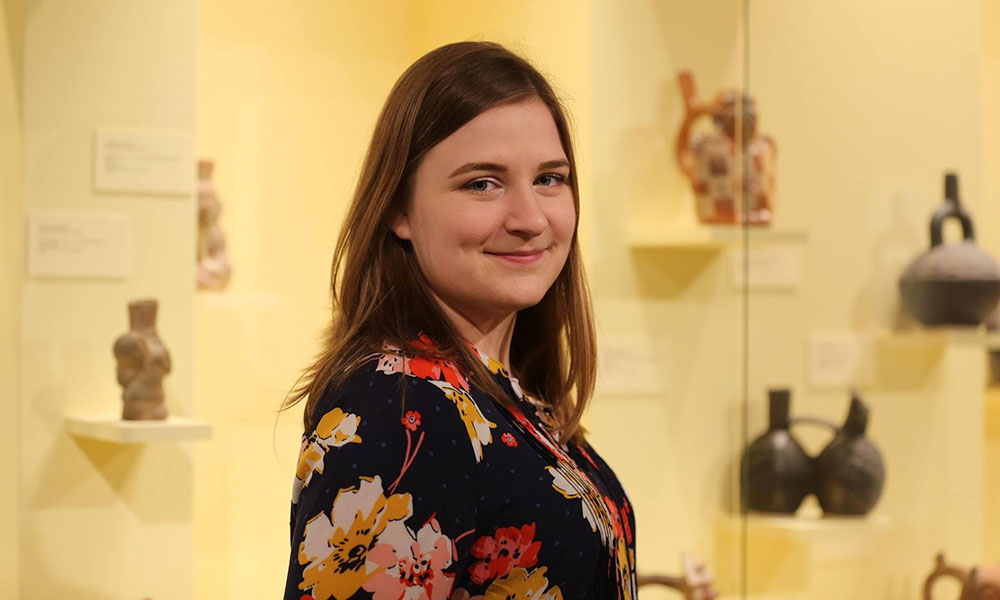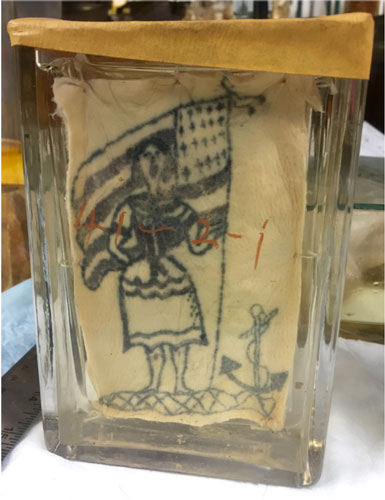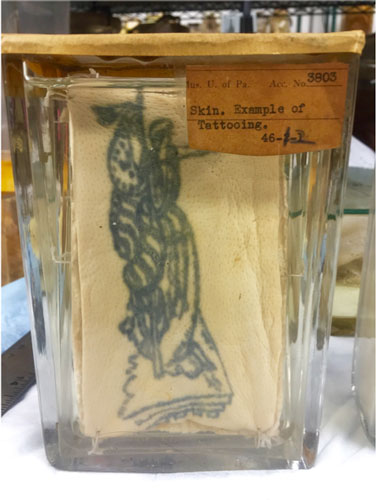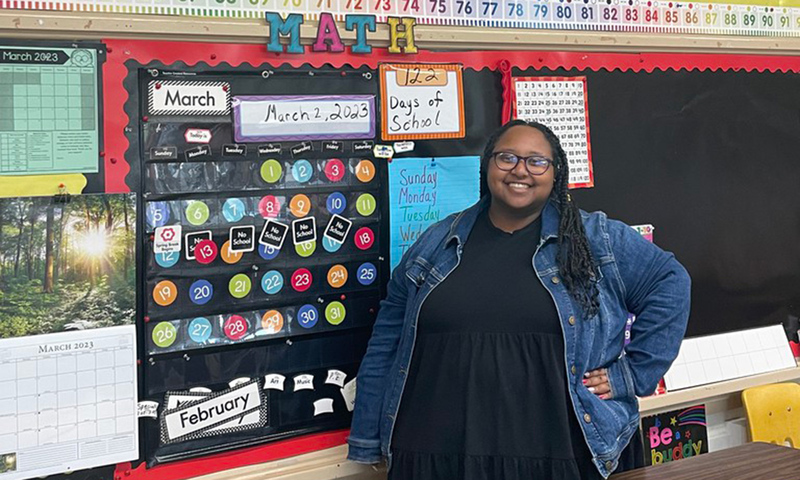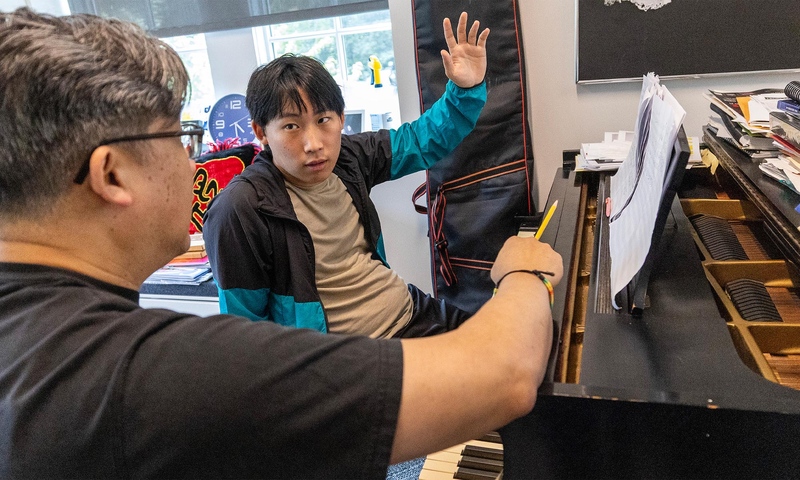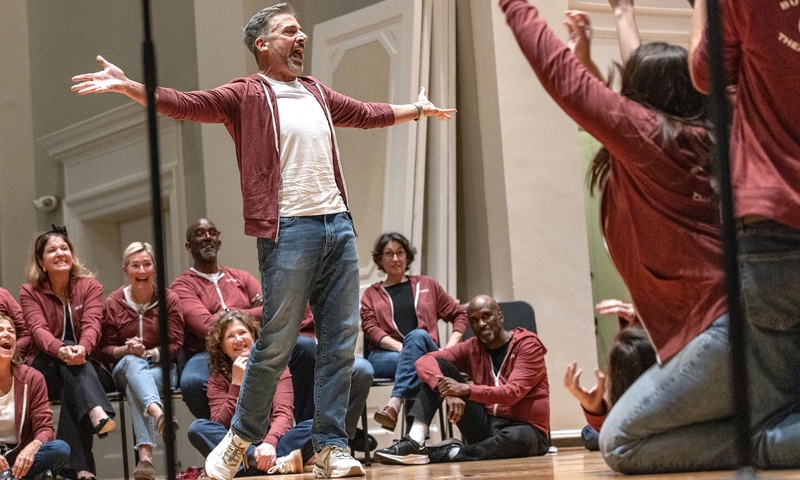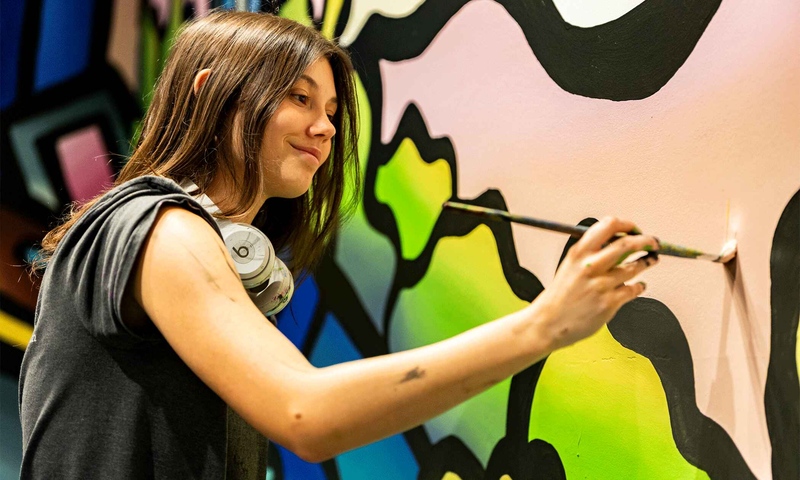For Karly Etz, a 2013 Art History and Visual Culture (AHVC) graduate, the tattoo is an art form with social and historical implications. So much so that she is basing her doctoral dissertation on the subject, “Skin Inscriptions: The Tattoo Medium in Contemporary Art.”
She was inspired by her studies in classical art and architecture at Denison to achieve graduate degrees in art history. Etz attended Penn State, where her interest in the tattoo as art was piqued. It was reflected in the title of her thesis, “The Rise of the Digital Tattoo in Contemporary Art.” In a Penn State article, she notes that tattoos — like other forms of art — provide insight into a culture and time period. “But it’s more powerful, because it’s permanent,” she said.
During a visit to Denison in late summer of 2019, Etz shared nostalgic memories of Denison’s AHVC department name change and explained her field of study to current AHVC majors.
The path of her dissertation; art — specifically body art — has always fascinated Etz. The representations of the art, concerning medium, agency, self-expression, and curation/ preservation, provoke the modern art historian. Etz has spent a number of years answering questions of this sort.
Her studies have taken her as far as the Wellcome Library of London and as close as Philadelphia, where she studies how fragments of tattooed human skin are preserved and displayed as artifacts. Furthermore, her dissertation explores the meaning behind tattoos—how and why they represent both the artist and the subject. Etz closely studies how, historically, tattoos have demonstrated both defying and conforming to aspects of human experience.
And Etz’s dissertation work lies beyond the museum. Body art has cultural and sociological implications traceable through history. From ancient cultural understandings of body art to modern displays of identity and heritage, tattoos have laced their way into discussions of contemporary issues like immigration.
As discussed during her visit, perhaps the most crucial part of her dissertation is in relation to present day; the field of art history beseeches critical contemporary application, which she has found in her contemporary art studies.
